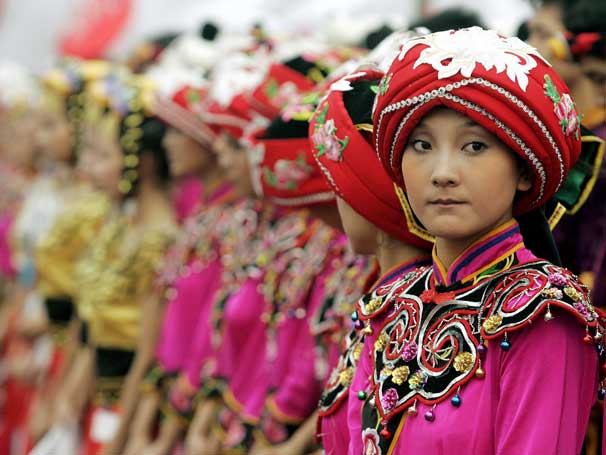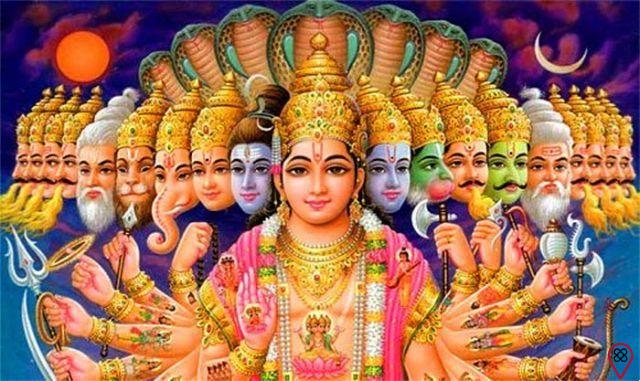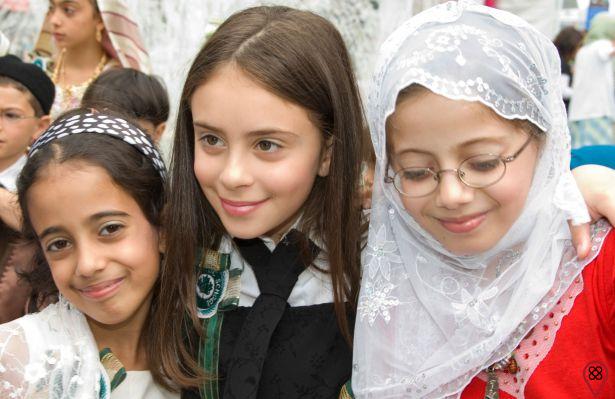Although colors can modify all these characteristics, different cultures in the world associate certain colors with certain sensations and ideas. In this case, the meaning of each tone depends on how each culture interprets it. To visualize this difference, we will analyze the colors orange, brown, yellow, green, blue, purple, red and black in the following cultures: Western, Far Eastern, Indian and Middle Eastern.
western culture

Orange: conveys warmth and vitality, affecting the temperature of something and bringing a sense of positive energy.
Brown: associated with comfort, practicality and stability, this color can be used to change the way an environment is built.
Yellow: in addition to stimulating joy and happiness, the color yellow is also seen as a way to draw attention to a topic.
Green: even bringing a positive feeling like luck, the color green is also interpreted as the color of greed and jealousy, as it is the color of printed money.
Blue: understood as the color of sadness, blue can also be understood as the color of silence and tranquility, being able to calm someone who is going through a stressful situation.
Purple: spirituality, wisdom and royalty are the characteristics associated with the color purple, being positive for study or prayer environments.
Red: the color that represents strong emotions such as love, adrenaline and danger is the color red, needing to be used with caution so as not to make an environment aggressive or suggestive.
Black: interpreted as a negative color, black is associated with death, intimidation and mourning, being contraindicated for festive and happy occasions.
Far East culture

Orange: this color is understood as a visual representation of joy, spirituality and adaptability, being understood as a versatile color.
Brown: because it has the same color as the earth, brown is seen as a color that represents effort, dedication and also the end of something, understood as mourning.
Yellow: this color can be used by those who want to highlight their masculinity, the lineage of royalty or value a sacred environment.
Green: as it is the color of plants, green is seen as the color of fertility, nature, hope and life.
Blue: Unlike the masculine stereotype disseminated in the West, the color blue is associated with the female gender, also transmitting the power of healing and strengthening relationships.
Purple: approaching the color yellow, purple is also responsible for spirituality, royalty and the display of privilege.
Red: prosperity, fortune and vitality are ideas conveyed by the color red, all being positive and valued.
Black: unlike western culture, black is interpreted in the far east as the color of health and prosperity, having a very positive aspect.
indian culture

Orange: the orange color represents love, courage and connection with the sacred, being ideal for weddings in this culture.
Brown: just like in far eastern culture, the color brown represents mourning in Indian culture.
Yellow: in temples and sacred objects, the color yellow is predominant in Indian culture, as it represents the sacred and prosperity.
Green: being also a symbol of fertility, the color green represents hope and harvests, since a green field will always be a prosperous field.
Blue: the energy needed to practice sports and to exert the strength that each one has within them, the color blue is the most suitable.
Purple: even bringing feelings such as heartache, purple is also understood as the color of nobility and comfort, and can be used sparingly in certain environments.
Red: once again with a positive aspect, red is the color of royalty, beauty and power, being ideal for showing yourself and finding your own strength.
Black: Returning to the negative meaning, the color black in Indian culture represents evil, darkness and negativity, being very avoided when attracting positive energies.
Middle Eastern culture

Orange: while in other cultures the color orange represents comfort or vitality, in the Middle East it is the color of mourning and loss.
Brown: as in most cultures, the color brown is also associated with comfort, stability and harmony, making it ideal for the family environment.
Yellow: happiness and prosperity are represented and attracted by the color yellow in the Middle East, although the proximity of this tone to orange can sometimes represent mourning.
Green: once again, the color green is one that highlights hope, vitality and fertility, having almost the same meaning in world culture.
Blue: because it represents the color of the sky, it is believed that blue is the color of spirituality and also of connection with the divine, and can be used in moments of mourning.
Purple: Also in agreement with previous cultures, purple in the Middle East is what represents royalty, wealth and virtue, being a very noble color.
Red: with a purely negative meaning, the color red brings a sense of danger, approaching evil and the need for caution.
Black: both mourning and rebirth are represented by the color black, which also represents the mystery that exists in this transition of cycles.
You may also like other articles. Access: What is the balance crystal for each Chakra?

























